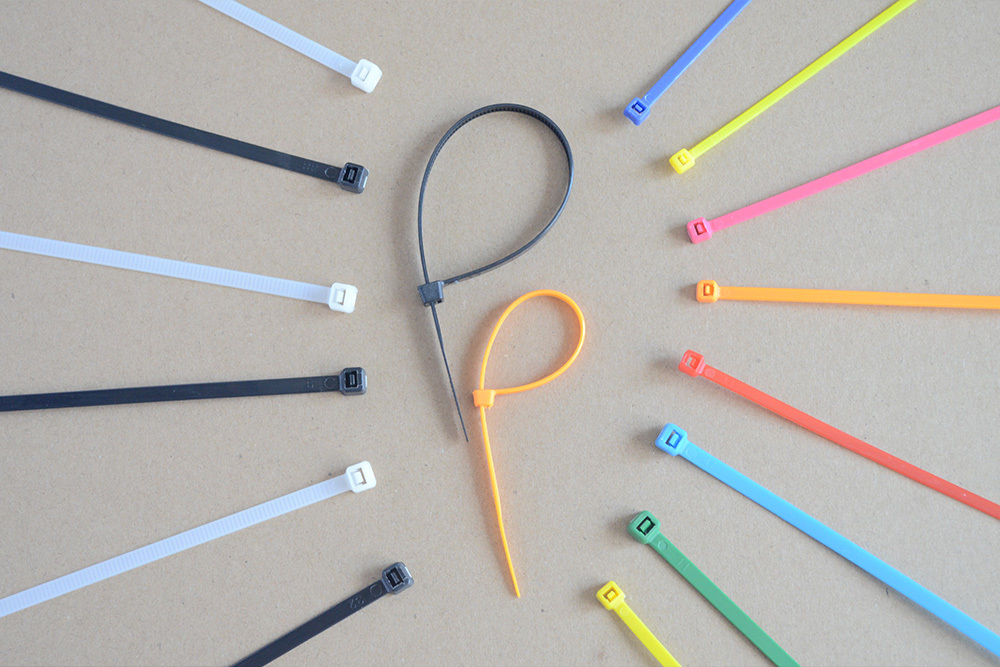04
2025
-
11
Selection of anti-aging performance for plastic cable ties
Author:
How to Select Plastic Cable Ties with Enhanced Anti-Aging Performance
Understanding the Core Factors Affecting Aging Resistance
Plastic cable ties face degradation from environmental factors such as ultraviolet (UV) radiation, temperature fluctuations, humidity, and chemical exposure. The molecular structure of the material determines its inherent resistance to these stressors. For instance, polyamide 66 (PA66) is widely recognized for its superior aging resistance compared to polyamide 6 (PA6) due to its lower water absorption rate and higher thermal stability. PA66 retains mechanical strength in high-humidity environments, whereas PA6 may soften or elongate under similar conditions.
UV radiation accelerates surface degradation, leading to discoloration, cracking, and reduced tensile strength. To mitigate this, manufacturers incorporate UV stabilizers during production. These additives absorb or reflect UV rays, extending the lifespan of cable ties in outdoor applications. For example, black cable ties with carbon black additives demonstrate 3–5 times better UV resistance than unstabilized alternatives.
Thermal aging occurs when materials are exposed to prolonged high temperatures, causing molecular chain scission and embrittlement. Heat-stabilized PA66 grades can withstand continuous temperatures up to 120°C without significant performance loss, making them suitable for automotive engine compartments or industrial machinery.
Material Selection Strategies for Long-Term Durability
High-Performance Engineering Plastics
PA66 remains the benchmark for general-purpose cable ties due to its balance of cost and performance. However, specialized grades address specific aging challenges:
- Heat-Stabilized PA66: Formulated with thermal stabilizers, this variant maintains mechanical integrity in environments exceeding 85°C. It is ideal for electrical installations near heat sources or industrial equipment.
- UV-Resistant PA66: Enhanced with UV absorbers, these ties resist surface degradation in outdoor settings. Field tests show minimal yellowing after three years of direct sunlight exposure in tropical climates.
- Chemical-Resistant Polymers: For corrosive environments, materials like polypropylene (PP) or ethylene-tetrafluoroethylene (ETFE) offer resistance to acids, salts, and solvents. ETFE, while slightly less strong than PA66, excels in chemical stability and UV resistance, making it suitable for laboratory or marine applications.
Advanced Additive Technologies
The integration of functional masterbatches during manufacturing significantly improves aging resistance without altering the base material’s properties. For example:
- Anti-Aging Masterbatches: These pre-dispersed additives ensure uniform distribution of UV stabilizers and antioxidants throughout the polymer matrix. This method reduces production variability and enhances long-term performance compared to direct powder mixing.
- Hydrolysis-Resistant Additives: In humid environments, water molecules can hydrolyze polymer chains, leading to brittleness. Hydrolysis stabilizers counteract this by forming chemical bonds with water, preserving tensile strength even after prolonged exposure.
- Cold-Temperature Enhancers: For low-temperature applications, additives like ST625 improve impact resistance by preventing crystallization in the polymer structure. This eliminates the need for post-production water boiling treatments, streamlining manufacturing while ensuring flexibility at -40°C.
Application-Specific Design Considerations
Environmental Adaptation
The intended use environment dictates material selection. For instance:
- Outdoor Installations: Prioritize UV-stabilized PA66 or PA12, which offers a 12–15-year lifespan in sunlight. PA12’s low water absorption and chemical resistance make it ideal for solar panel mounting or agricultural equipment.
- Cold Storage Facilities: Cold-resistant grades with added plasticizers maintain flexibility at sub-zero temperatures, preventing crack propagation during thermal cycling.
- High-Humidity Zones: Hydrolysis-resistant PA66 or ETFE resist swelling and strength loss in damp conditions, such as basements or marine vessels.
Structural Optimization
Design features influence aging performance:
- Thickness Uniformity: Inconsistent wall thickness leads to stress concentrations, accelerating crack initiation. High-quality molds ensure even material distribution, enhancing fatigue resistance.
- Locking Mechanism: Self-locking teeth with precise angles reduce wear during repeated adjustments, prolonging service life.
- Edge Radiusing: Rounded edges minimize stress risers, delaying the onset of brittle fracture under vibration or dynamic loads.
Maintenance Practices
Proper storage and handling extend usability:
- Avoid Direct Sunlight: Store cable ties in opaque containers to prevent pre-exposure to UV radiation, which can deplete stabilizers before installation.
- Control Humidity: Sealed packaging with desiccants maintains low moisture levels, preventing premature hydrolysis in humid climates.
- Limit Mechanical Stress: Avoid bending ties beyond their rated radius, as micro-cracks can form and propagate over time.
By aligning material selection, additive technology, and design practices with environmental demands, users can achieve optimal aging resistance in plastic cable ties, ensuring reliability across diverse applications.
plastic cable ties
Previous Page
Hot News
2025-11-04
Selection of tensile strength for plastic cable ties
Tensile strength measures a plastic cable tie’s ability to withstand pulling forces without breaking. It is determined by the polymer’s molecular structure, manufacturing process, and cross-sectional design. The base material’s inherent strength—such as polyamide 66 (PA66) versus polypropylene (PP)—plays a critical role.
2025-11-04
Selection of anti-aging performance for plastic cable ties
Plastic cable ties face degradation from environmental factors such as ultraviolet (UV) radiation, temperature fluctuations, humidity, and chemical exposure. The molecular structure of the material determines its inherent resistance to these stressors. For instance, polyamide 66 (PA66) is widely recognized for its superior aging resistance compared to polyamide 6 (PA6) due to its lower water absorption rate and higher thermal stability.
2025-11-03
Weather resistance options for plastic cable ties
The foundation of a plastic cable tie’s weather resistance lies in its polymer composition. Polyamide 66 (PA66), a common choice, offers moderate resistance to UV radiation and temperature fluctuations but degrades faster under prolonged sunlight exposure compared to specialized materials. Its amide groups are prone to hydrolytic breakdown in humid environments, leading to embrittlement over time.
2025-11-03
Selection of insulation performance for plastic cable ties
The insulation performance of plastic cable ties hinges on their polymer composition and molecular structure. Polyamide 66 (PA66), a widely used base material, exhibits moderate dielectric strength, making it suitable for low-voltage applications in dry environments.

